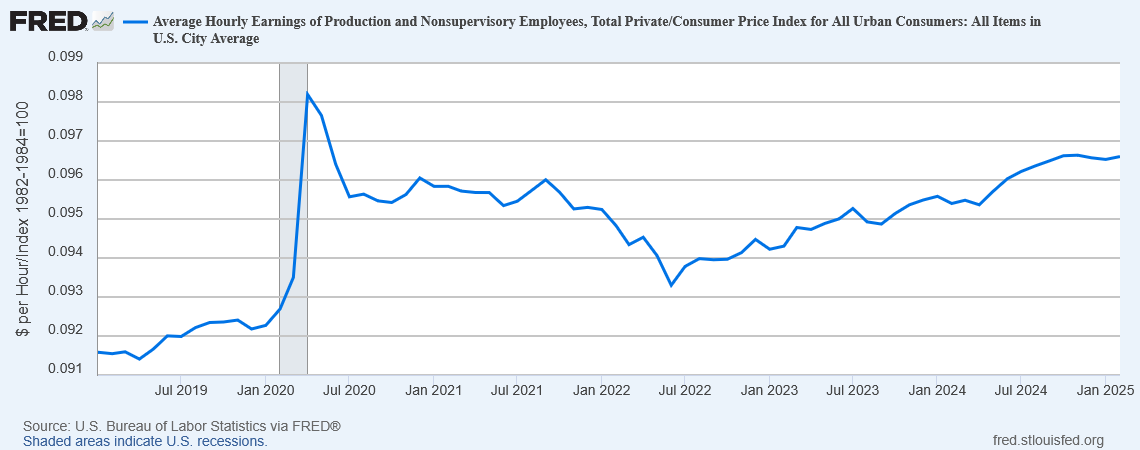Article • Dean Baker’s Beat the Press
Harry Enten Commits the Cardinal Sin: No One Gets Taller When the Short People Leave the Room

Article • Dean Baker’s Beat the Press
Fact-based, data-driven research and analysis to advance democratic debate on vital issues shaping people’s lives.
Center for Economic and Policy Research
1611 Connecticut Ave. NW
Suite 400
Washington, DC 20009
Tel: 202-293-5380
Fax: 202-588-1356
https://cepr.net
I almost always enjoy Harry Enten’s analyses on CNN. He is usually thoughtful and on target. But he took a big swing and a miss in a piece yesterday on the “fed up” consumer.
The gist of the piece is that consumers are worried about Trump’s plans for big taxes (tariffs) on imports of cars and everything else in sight. As Enten points out, this means higher prices and that their paychecks won’t go as far.
Where Enten stumbles badly is in his recounting the recent history. He tells his audience:
The real wage growth over the last four years, in which Congress passed a massive stimulus package at the beginning of the decade, has actually been -5%! There wasn’t a single four-year period since at least the 1960s prior to Covid where there was anywhere near such a drop in income taking into account inflation.
Okay, this is real rookie mistake stuff, not what we expect from Enten. Average wages did fall from January 2021, but not because most people’s wages went down. They fell because low wage workers in sectors like hotels and restaurants got their jobs back.
This is easy to see in the data. This graph shows real average hourly wages, that is wages adjusted for inflation, going back to 2019.

As can be seen, there is a big jump in March and April of 2020. Employers didn’t suddenly get generous and hand workers big pay increases. The average rose because they laid off 20 million, mostly lower paid workers.
This is the same story as the average height in a room rising when the short people leave. No one grew taller, but the average still rose. And no one gets shorter when they come back and the average height falls.
This is what was happening as we reemployed the people who lost their jobs. We were still down 10 million jobs when Biden passed his big stimulus package. As these lower-paid workers got back to work, it lowered the average.
If we want to know what happened to an average worker’s pay we need to go back to February 2020, before the pandemic. Real wages are up almost 5.0 percent from that level. Consumers are still right to be upset about Trump’s tariffs, which are a confused and pointless attack on their pocketbooks. But they are coming against a backdrop of rising, not falling, real wages.